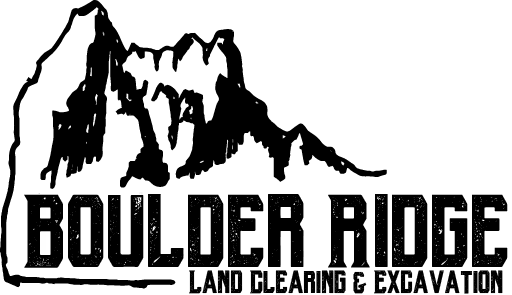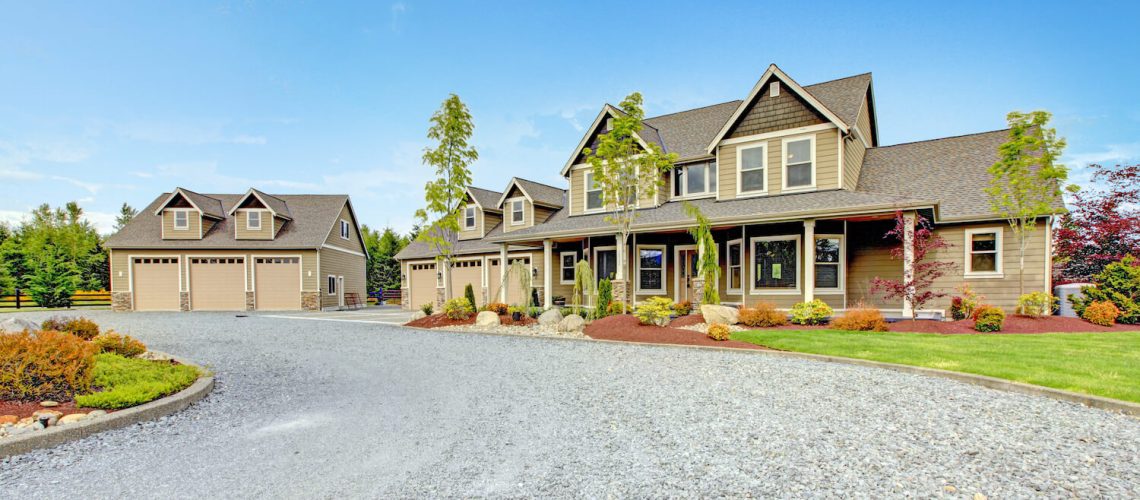Gravel roads and driveways are common features in both rural and suburban areas, offering a cost-effective and versatile solution for transportation and access. However, these surfaces require diligent maintenance to ensure their longevity, functionality, and aesthetics.
In this comprehensive guide, we will explore the intricacies of professional gravel road and driveway maintenance, covering key aspects such as grading, drainage, dust control, and repair.
The Importance of Gravel Road and Driveway Maintenance
Gravel roads and driveways, while resilient, are susceptible to wear and tear caused by weather conditions, traffic, and natural elements. Regular maintenance is essential to prevent issues such as potholes, erosion, and surface irregularities. Proper upkeep not only enhances the visual appeal but also contributes to safety and usability. Neglecting maintenance can lead to costly repairs and compromise the overall integrity of the surface.
Grading for Optimal Surface Smoothness
Grading is a fundamental aspect of gravel road and driveway maintenance, involving the reshaping of the surface to achieve proper drainage and smoothness. Over time, gravel surfaces can develop ruts, potholes, and uneven areas due to traffic, weathering, and erosion. Grading helps to redistribute the gravel, fill in low spots, and create a uniform surface.
Professional grading is typically performed using specialized equipment such as graders and compactors. The process involves scraping the existing gravel, reshaping the road or driveway, and then compacting the surface to ensure stability. This not only improves the overall appearance but also facilitates proper water runoff, preventing pooling and erosion.
Effective Drainage Systems
Proper drainage is crucial for the longevity of gravel roads and driveways. Water is a primary culprit in causing erosion and degradation of the surface. Implementing effective drainage solutions helps prevent water from accumulating on the surface, reducing the risk of potholes and washouts.
One common drainage method is the installation of ditches along the sides of the road or driveway. These ditches collect and divert rainwater, preventing it from flowing over the surface. Additionally, culverts may be installed to facilitate the passage of water under the road, further minimizing surface water runoff.
Regular inspection and maintenance of drainage features are vital to ensure they remain unobstructed. Clearing debris, removing sediment buildup, and repairing damaged culverts are essential tasks to uphold the effectiveness of the drainage system.
Dust Control Strategies
Dust is a common concern associated with gravel surfaces, especially in dry climates or during periods of low precipitation. Dust not only diminishes the aesthetics of the area but can also pose health risks and reduce visibility for drivers. Implementing effective dust control measures is essential for maintaining a safe and comfortable environment.
Calcium chloride and magnesium chloride are commonly used dust suppressants. These hygroscopic materials absorb moisture from the air, reducing the amount of loose dust on the surface. Application methods include spraying the suppressant onto the gravel surface, and repeated treatments may be necessary depending on environmental conditions.
Vegetative cover, such as grass or other ground cover plants, can also contribute to dust control. Establishing and maintaining vegetation along the edges of the gravel road or driveway helps stabilize the soil and reduce dust generation. This natural approach not only controls dust but also adds a green aesthetic to the surroundings.
Repairing Potholes and Surface Damage
Potholes are a common issue with gravel surfaces, and addressing them promptly is crucial to prevent further deterioration. Potholes are typically caused by a combination of factors, including water infiltration, freeze-thaw cycles, and the constant impact of traffic.
Repairing potholes involves cleaning out the damaged area, filling it with fresh gravel, and compacting the material to ensure stability. Professional repair may also involve the use of specialized equipment, such as vibratory compactors, to achieve a durable and long-lasting result. Regular inspections to identify and repair small potholes prevent them from expanding and causing more extensive damage to the surface.
Choosing the Right Gravel
The choice of gravel material plays a significant role in the overall performance and maintenance requirements of gravel roads and driveways. Different types of gravel vary in size, shape, and composition, influencing factors such as drainage, stability, and durability.
Crushed stone, gravel, and decomposed granite are common choices for gravel surfaces. The selection depends on factors such as local availability, budget, and the intended use of the road or driveway. Crushed stone with angular edges tends to interlock, creating a stable surface, while rounded gravel may be more prone to shifting.
Regular replenishment of gravel is necessary as it naturally migrates and breaks down over time. Choosing a durable and well-graded material helps minimize the frequency of replenishment and contributes to a more resilient surface.
Implementing Erosion Control Measures
Erosion is a natural process that can significantly impact gravel surfaces, especially in areas with steep slopes or heavy rainfall. Implementing erosion control measures is essential to mitigate the effects of erosion and preserve the integrity of the road or driveway.
Using erosion control blankets or matting is a common technique to stabilize the soil and prevent erosion. These materials, typically made of natural fibers or synthetic materials, create a protective layer over the soil, allowing vegetation to establish and roots to anchor the surface.
Additionally, strategically placed vegetation, such as grass or cover crops, helps absorb excess water, stabilize the soil, and reduce the risk of erosion. Properly designed and maintained erosion control measures are integral components of professional gravel road and driveway maintenance.
Regular Inspections: A Proactive Approach
Regular inspections are the cornerstone of effective gravel road and driveway maintenance. Proactively identifying issues before they escalate can save both time and resources. Inspections should encompass the entire surface, focusing on areas prone to wear and potential problems such as drainage structures, culverts, and the condition of the gravel.
A checklist for inspections may include evaluating the smoothness of the surface, checking for signs of erosion, assessing the effectiveness of drainage features, and identifying any emerging potholes or surface irregularities. By conducting these inspections regularly, property owners can address minor concerns before they escalate into major problems, extending the lifespan of the gravel surface.
Environmentally Friendly Practices
Sustainability is an increasingly important aspect of road and driveway maintenance. Choosing environmentally friendly practices not only minimizes the impact on the ecosystem but can also result in long-term cost savings. For example, using recycled materials for gravel or exploring permeable paving options can contribute to eco-friendly maintenance.
Vegetative solutions, such as establishing native plantings along the edges of the gravel surface, not only enhance the aesthetic appeal but also provide ecological benefits. These plants contribute to soil stability, support local biodiversity, and can act as a natural barrier to erosion. By incorporating sustainable practices, property owners can align gravel road and driveway maintenance with broader environmental stewardship goals.
Winter Maintenance Considerations
In regions with cold climates, winter maintenance is a critical component of preserving gravel roads and driveways. The freeze-thaw cycle can exacerbate surface damage, leading to increased pothole formation and erosion. Sand and salt applications are common strategies for mitigating the impact of winter weather on gravel surfaces.
However, it’s important to note that excessive salt usage can contribute to environmental pollution and negatively affect nearby vegetation. Therefore, a balanced approach, considering both the effectiveness of the treatment and its environmental impact, is crucial. Property owners should monitor the condition of the surface during winter and promptly address any emerging issues to prevent long-term damage.
Community Engagement and Cooperation
In some cases, gravel roads may serve multiple properties or an entire community. Establishing a cooperative approach to maintenance can be beneficial, both in terms of cost-sharing and the implementation of standardized maintenance practices. Collaboration allows for the sharing of resources, equipment, and knowledge among community members, fostering a collective effort to preserve the quality of the gravel surfaces.
Community engagement also extends to educating residents about the importance of responsible use and maintenance practices. Encouraging responsible driving habits, such as adhering to speed limits and avoiding unnecessary heavy loads, can significantly reduce wear and tear on the gravel surface, contributing to its longevity.
Investing in Professional Home Gravel Project Expertise Services
While property owners can perform many routine maintenance tasks, seeking professional expertise is advisable for more complex issues or large-scale projects. Professional grading services, engineering consultations, and specialized equipment operators bring a level of skill and experience that ensures the most effective and lasting results.
Moreover, professionals can provide valuable insights into long-term planning and recommend strategies that align with the specific characteristics of the gravel surface and local environmental conditions. Investing in professional expertise may involve an initial cost but can lead to significant savings over time by preventing major issues and optimizing maintenance efforts.

